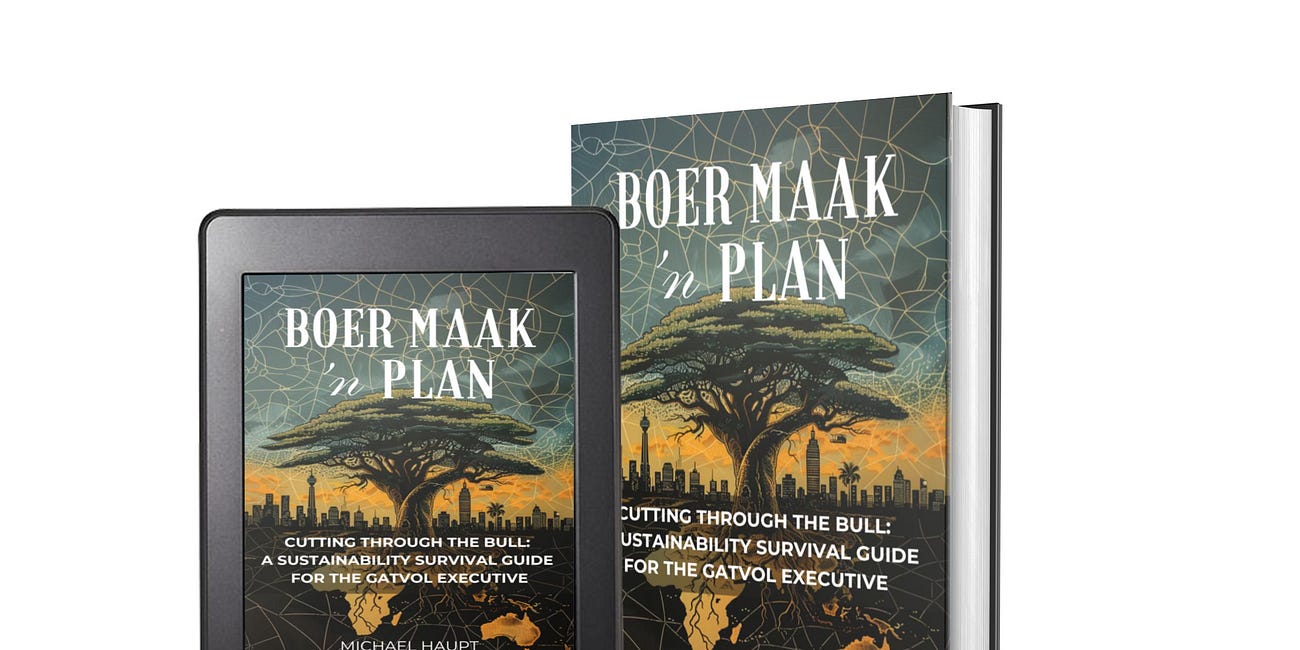Boer Maak 'n Plan - Chapter 20 - Overcoming Resistance
Strategies for Engaging Stakeholders in the Regenerative Transition

As we embark on the journey towards regenerative practices, we will inevitably encounter resistance from various stakeholders who may be sceptical, afraid, or simply unfamiliar with this new approach. Navigating these challenges requires a strategic, empathetic, and proactive approach to stakeholder engagement. This chapter provides a roadmap for overcoming resistance and building buy-in for the regenerative transition.
Understanding Resistance
Recognising that resistance is a natural response to change is the first step in overcoming it. Stakeholders may resist the shift towards regenerative practices for various reasons, such as fear of the unknown, short-term thinking, lack of understanding, attachment to the status quo, and concerns about costs and resources.
To effectively engage with resistant stakeholders, leaders must first seek to understand the underlying concerns and motivations behind their opposition. Active listening, empathy, and a willingness to see things from different perspectives are crucial. By approaching resistance with curiosity and openness, leaders can create a foundation of trust and mutual understanding.
Building the Business Case
One of the most powerful ways to overcome resistance is to demonstrate the compelling business case for regenerative approaches. This involves presenting evidence that transitioning to regenerative practices is both socially and environmentally responsible, as well as strategically sound for ensuring long-term competitiveness and resilience.
To build this case, leaders can:
Gather and present data showing the financial benefits of regenerative approaches
Highlight successful case studies of companies that have implemented regenerative strategies
Conduct scenario planning to illustrate the risks and costs of maintaining the status quo
Frame the regenerative transition as a proactive opportunity to position the company as a leader in the emerging regenerative economy
By grounding the conversation in concrete business benefits and strategic considerations, leaders can help resistant stakeholders see the value and necessity of embracing regenerative approaches.
Communicating the Vision and Values
In addition to making the rational case, leaders must also inspire and engage stakeholders emotionally. This involves crafting a compelling narrative that connects the regenerative transition to the organisation's core purpose, values, and identity.
An effective regenerative vision includes:
A clear articulation of the positive impact and legacy the company can create
Stories illustrating how regenerative practices align with the company's history, culture, and values
Vivid language that portrays a thriving, resilient future enabled by the company's regenerative leadership
An emphasis on the collective benefits and shared value created for all stakeholders
By communicating a vision that resonates with stakeholders' deepest aspirations and values, leaders can tap into a powerful source of motivation and commitment to the regenerative journey.
Engaging Stakeholders as Partners
Overcoming resistance is an ongoing process of dialogue, collaboration, and co-creation with stakeholders. To build trust and momentum, leaders must actively engage stakeholders as partners in shaping the journey.
Key strategies for stakeholder engagement include:
Creating regular opportunities for open and honest conversation
Seeking input and feedback from stakeholders on key decisions and milestones
Identifying and empowering internal champions to build support among peers and colleagues
Developing targeted engagement plans for different stakeholder groups
By involving stakeholders as active participants, leaders can build a sense of shared ownership and commitment to the success of the transition.
Navigating Trade-offs and Tensions
The path to regenerative business is rarely straightforward, and leaders must be prepared to navigate complex trade-offs and tensions, such as balancing short-term financial pressures with long-term regenerative investments, reconciling competing stakeholder priorities, managing risks and uncertainties, and communicating setbacks transparently.
To navigate these challenges effectively, leaders can:
Establish clear decision-making frameworks that prioritise regenerative principles and stakeholder well-being
Foster a culture of transparency, learning, and adaptation
Provide support and resources to help stakeholders develop the skills needed to thrive in the transition
Celebrate successes and milestones to maintain motivation and build resilience
By approaching trade-offs and tensions with integrity, empathy, and a commitment to finding win-win solutions, leaders can build trust and resilience for the long haul.
Measuring and Communicating Progress
To sustain momentum and buy-in, leaders must establish clear metrics for tracking progress and regularly communicate outcomes to stakeholders. This involves:
Defining holistic success measures that go beyond narrow financial indicators
Setting ambitious but achievable targets that align with the company's regenerative vision
Implementing robust data collection and reporting systems to monitor progress
Communicating results and lessons learned transparently to all stakeholders
Celebrating successes and acknowledging challenges along the way
By demonstrating tangible progress and impact, leaders can build confidence and excitement for the regenerative transition among even the most resistant stakeholders.
Engaging stakeholders in the regenerative transition is a critical leadership challenge that requires empathy, vision, strategic thinking, and perseverance. By understanding resistance, building the business case, communicating a compelling vision, engaging stakeholders as partners, navigating trade-offs, and measuring and communicating progress, South African business leaders can overcome obstacles and build broad-based support for the regenerative journey. The rewards of a thriving, resilient, and regenerative future are well worth the effort, and by embracing the challenges of stakeholder engagement with creativity, courage, and conviction, leaders can unlock the full potential of their organisations to become catalysts for transformative change in South Africa and beyond.
Boer Maak 'n Plan—Table of Contents
Want to navigate to a particular chapter quickly? Use these links. Back Cover Blurb Foreword Introduction About the Author Part 1 - The Past: Patterns of Civilisational Cycles Part 1 Introduction Chapter 1 - Barbarians at the Gate: Defending South Africa's Resilience in an Age of Globalisation




